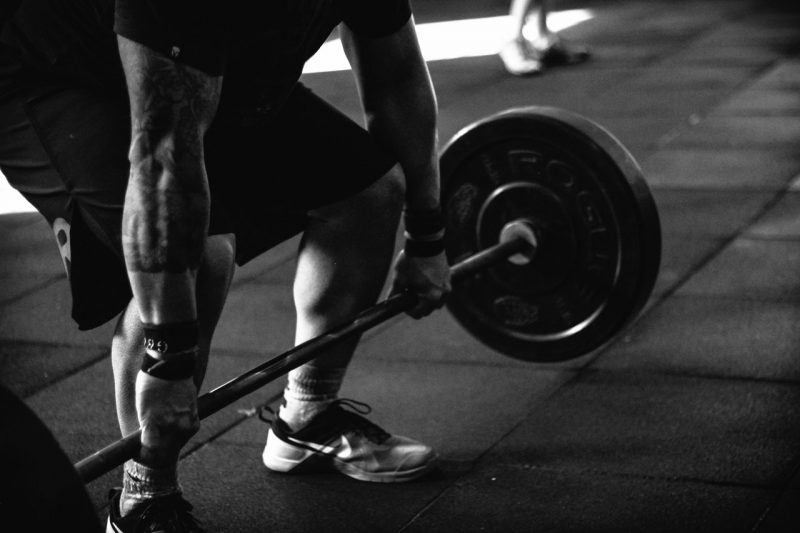Weight lifting belts have been one of the basic training gears when executing heavy lifts and CrossFit workouts. Typically, many will wear it while performing squats, bench press, deadlifts, overhead pressing, Olympic lifts, and the like.
As it is becoming a staple gym equipment, others are just utilizing it as a matter of preference. Even so, what are these belts made for? You might know some reasons for doing so, but in case you don’t know them all, below is a list of its advantages.
Stabilization and Stress Reduction on the Spine
Research has found that wearing the best weightlifting belt during heavy lifting has significant changes in a person’s intra-abdominal pressure and intervertebral discs. So far, this has been the only claim that is widely accepted by many fitness professionals.
ADVERTISEMENT |
First off, imagine a balloon inflating without your abdomen. Did you get the picture? If so, the continuous inflation of said balloon is similar to what happens when there’s an increase in your intra-abdominal pressure. As the name implies, it’s the pressure inside your abs.
A number of studies have shown that an increase in the intra-abdominal pressure can stabilize your spine internally. As the said pressure increases, one’s core muscles and lower back will also stabilize the spine from the outside, decreasing the stress that one’s spine will encounter when executing a heavy lift.
Weightlifting belts are one of the scientifically-proven methods in improving intra-abdominal pressure. A study, which is mentioned in a post on Boxlife, claimed that weightlifting belts positively affect one’s intra-abdominal pressure. It also reduces erector spinae muscles’ intramuscular pressure and improves muscle activation.
Several studies also reported that one’s intra-abdominal pressure could increase by up to 40% when wearing the said belt during weightlifting. Another study added that a decrease of 50% in compression of the intervertebral discs was seen when weightlifters use the belt, as well.
ADVERTISEMENT |
In general, the higher your intra-abdominal pressure, the more you can stabilize your back when lifting heavy loads. Additionally, the lower the compression of your intervertebral discs, the lesser the chances of muscular strains. All of these can be done when wearing weightlifting belts.
Preventive Measure for Potential Injuries
Lifters tend to hyper-extend their backs so they can crank out heavier loads and perform more repetitions. A post published Livestrong specifically mentioned that excessive back muscle extension could lead to ligament damage, muscle strain, and stress fractures. In solving this, it is recommended to wear weightlifting as a preventive measure for any potential injuries.
We’ve mentioned that wearing weightlifting belts can lower the risks of potential muscle strain, especially in the lower back. Specifically, we’ve stated that wearing it reduces the compressive force borne down below your spinal discs.
However, just to clear things up. It’s a ‘preventive measure’ for back pain, not a ‘pain reliever.’ You should not use it as a treatment for musculoskeletal-related pain. Otherwise, a continuous weight lifting even with back pain may result in hernia—the protrusion of an internal organ through the weak parts of connective tissue or cavity in which it resides.
Further, here’s a few medically advised countermeasures for weightlifting-related pain that you should follow:
ADVERTISEMENT |
- Properly do everything. Perform every lift slowly, but surely. Always start lifting lightweight loads.
- Be sure to have sufficient magnesium. Magnesium deficiency can cause muscle cells to malfunction and eventually result in muscle pain. One study then concluded that magnesium supplementation could alleviate back pain up to 49%.
- Avoid workout that involves intensive back flexion. Refrain from doing yoga poses and weightlifting exercises, such as good morning, that require back flexion until your back pain is gone.
- Avoid sedentary postures and keep full-body mobility. Sitting for a long time can stiffen your body, which eventually causes your spine to lose its ability to disperse force. Also, if an area of your spine becomes stiff, other segments will do the job instead in a forced way.
Another clarification is that weightlifting belts do not ‘directly support’ your back. There is a reason why these belts are worn right around your abdominal area, rather than in your back. It provides proprioceptive cues or that pushback in your torso, allowing you to tighten your core and lift heavy loads properly. It ‘indirectly’ supports your back by making your core to be as rigid as possible. Consequently, you can lift better and prevent the risks of possible injuries.
Better Biomechanics
As a continuation of its preventive measure, several studies in the journal Medicine and Science in Sports and Exercise have been mentioning the advantage of using weightlifting belts, as well.
These studies have found out that utilization of these belts doesn’t only prevent potential spinal injuries but also improves hip and knee extension. Dr. Stoppani, in his post on BodyBuilding, mentioned that wearing weight lifting belts can reduce the amount of the following:
ADVERTISEMENT |
- Spinal flexion (forward bend);
- Spinal extension (backbend); and
- Lateral flexion of the spine (side to side bend).
As a result, there will be an increase in hip and knee flexion, which are both necessary body parts when lifting. In simple terms, wearing a weightlifting belt enables you to lift loads more with your legs than your back, improving your overall lifting performance. This position is the recommended biomechanics when lifting loads from the grounds, specifically when doing squats and deadlifts with barbells.
Takeaway
Weightlifting belts are typically worn by people who would love to test the maximal capacity of their strength and improve more. When you want to go higher and max out, you are typically encouraged to wear weightlifting belts after you can deadlift 1.5 times or squat your bodyweight.
Also, those lifters with weaker cores are advised to use belts, especially those women who already had multiple children. Nevertheless, it still depends on how capable and skilled a lifter in executing powerlifting movements, especially when indulging in competitions. By contrast, there is no need to use a belt when a person is only into general strength training.
ADVERTISEMENT |






